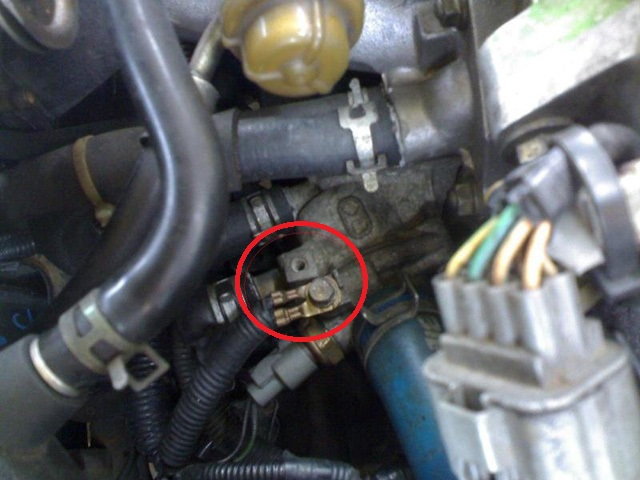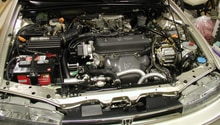Honda Civic: Why Won't My Civic Start?
Follow these steps to the source of your engine woes.
This article applies to the Honda Civic (1992-2000).
All cars need four things to run: Fuel, spark, compression and timing. When an engine won't run, it's because one or more of these four things are out of wack. Luckily, the D-series era (1992-2000) Honda Civic and Accord are fairly reliable and don't have a lot of model specific problems. Mainly, issues they'll face are the same ones any car might face. As such, this guide is a good general walkthrough of things to check when there's trouble getting the engine to start.
Check Engine Light
If the car won't start, the "check engine light" is almost certainly on. This light means the engine computer has codes stored that identify a malfunction. The first step to figuring out what's wrong is to pull those codes. Civics built before 2006 can display the codes on the gauge cluster through a series of flashing lights. Later model Civics will need to pull codes through an OBD2 scanner. These codes will give a good starting point towards figuring out what exactly is malfunctioning. It's the first step of getting the car back up and running again so don't skip it.

(Related Thread: How To Pull CEL, D4, SRS, and ABS Codes (with Code Lists) - Honda-Tech.com)
Dead Battery
If the engine won't turn over, or if there's no sound from the starter when turning the key, the battery is likely dead. The easy way to test the car battery is with a multimeter. Connect the multimeter to the positive and negative battery terminials. The multi-meter should read above 11.89V at a bare minimum. It should be closer to 12.66V. If it reads low or if the car won't turn over at all, replace the battery.
Featured Video: How to Test Battery With a Multimeter
No Spark
Spark plugs and wires can fail over time, too. Typically, a single failing spark plug will cause a misfire. Several failing spark plugs will keep a motor from turning over. Like the battery, a failing spark plug can be tested with a multimeter. To test the flow of electricity from the battery to the spark plug, remove it while the plug is still attached the spark plug wire. Turn the engine over and watch for a spark. A red, orange, or yellow spark is also indicative of a poor quality charge. If there is none, then there might be an issue at the distributor or with the spark plug wires. The distributor sends "spark" to the cylinders. When its timing is off, the spark can come late, early, or not at all. Typically, a failing distributor will also trigger a check engine light and diagnostic trouble code.
(Related Article: How to Tell if the Distributor is Faulty - CarsDirect.com)
Featured Video: How to Rule Out a Spark Plug as Your Problem
Low Compression
Low compression means that even with fuel and spark, there will be no explosion and the car will not start. Typically if only one cylinder is low on compression, the motor will just run poorly. The causes for low cylinder compression are typically a bad head gasket, worn piston rings, or bent valves. Low compression from those problems are also accompanied by other problems, like coolant in the oil, an engine that burns oil, or noisy operation. If the compression in the engine is low enough to completely keep the engine from turning over, it's likely that there're problems in several cylinders. Multiple damaged piston rings are a possible culprit—bits of which you could probably find in the oil pan. If there's no metal in the pan or coolant from the headgasket in the oil, the problem likely rests in the valves. Honda's D-series and B-series motors are both interference engines. If the timing belt broke while the car was driving at any point, there's a real likelihood that the pistons have bent the valves.
A compression tester is necessary in order to get the pressures inside each cylinder. Remove one spark plug and replace it with the compression tester. Unplug the fuse for the distributor and ignition for safety. Then, have someone bump the starter a few times to get a reading on the cylinder pressures.

(Related Thread: DIY Engine Compression Test - Honda-Tech.com)
No Fuel
The fuel system in these cars aren't typically known for being a weak point, but age tends to wear things out regardless of how reliable they are. The first thing to check is the fuel pump. The pump makes a whirring sound when the key is turned to the on position in the ignition. If there's no noise (and the car won't start), there's trouble with the fuel system.
Trouble shooting the fuel pump starts with the relay. It's located under the dash in the driver's footwell on the left hand side. Disconnect the main relay connector and jump the Black/Yellow #5 wire to the Yellow/Green #7 wire. The fuel pump should come on and whirr like it normally does. If this doesn't happen, either the relay or the fuel pump are dead. It this does happen, there might be another issue keeping the fuel pump from activating. Replace the main relay with a new one, and double check the grounding wires from the thermostat housing. A bad ground there will keep the fuel pump from sending fuel to the engine.

Figure 3. Fuel pump relay. 
Figure 4. Make sure this cable is grounded well without corrosion.
Too Much Fuel
Less common, but possible, is that the fuel pump might be flooding the engine. Typically this'll happen on cars with modified ECUs. Other potential culprits include a malfunctioning MAP sensor or a bad coolant temperature sensor. Both of these sensors inform the engine computer on how much fuel it needs. Lean (no fuel) and rich (too much fuel) conditions can be triggered by both of them. They'll also likely trigger a check engine light. Pull the codes from using an OBD reader to be sure which component is failing.
Spark plugs that aren't firing will also cause a rich condition and prevent the car from starting.
(Related Thread: Engine Flooded. Now Won't Start - Honda-Tech.com)
Misaligned Valve Timing
If the valves aren't opening and closing when they're supposed to, the engine will fail to start or just run poorly. To be sure the camshaft gears and timing belt are in order, remove the camshaft cover from the engine. Peek in and check that the timing marks on the belt, camshaft, and crank are all aligned correctly. This is only likely to be the case if the timing belt was done immediately preceding the "won't start" condition. In other words, a car that was running fine and then stopped will not have timing issues.
Featured Video: How to Check/Replace Timing Belt
Related Discussions
- No Start Diagnosis 101 - Honda-Tech.com
- Fuel Pump Doesn't Prime - Honda-Tech.com






